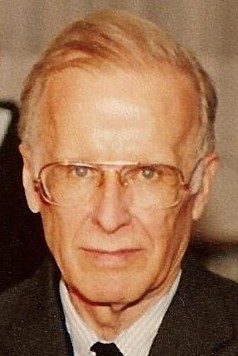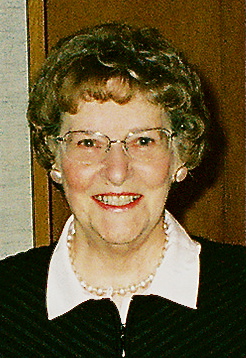
The history of computing hardware covers the developments from early simple devices to aid calculation to modern day computers.

The 6800 is an 8-bit microprocessor designed and first manufactured by Motorola in 1974. The MC6800 microprocessor was part of the M6800 Microcomputer System that also included serial and parallel interface ICs, RAM, ROM and other support chips. A significant design feature was that the M6800 family of ICs required only a single five-volt power supply at a time when most other microprocessors required three voltages. The M6800 Microcomputer System was announced in March 1974 and was in full production by the end of that year.

John Warner Backus was an American computer scientist. He led the team that invented and implemented FORTRAN, the first widely used high-level programming language, and was the inventor of the Backus–Naur form (BNF), a widely used notation to define syntaxes of formal languages. He later did research into the function-level programming paradigm, presenting his findings in his influential 1977 Turing Award lecture "Can Programming Be Liberated from the von Neumann Style?"

The IBM 7030, also known as Stretch, was IBM's first transistorized supercomputer. It was the fastest computer in the world from 1961 until the first CDC 6600 became operational in 1964.

Federico Faggin is an Italian physicist, engineer, inventor and entrepreneur. He is best known for designing the first commercial microprocessor, the Intel 4004. He led the 4004 (MCS-4) project and the design group during the first five years of Intel's microprocessor effort. Faggin also created, while working at Fairchild Semiconductor in 1968, the self-aligned MOS (metal-oxide-semiconductor) silicon-gate technology (SGT), which made possible MOS semiconductor memory chips, CCD image sensors, and the microprocessor. After the 4004, he led development of the Intel 8008 and 8080, using his SGT methodology for random logic chip design, which was essential to the creation of early Intel microprocessors. He was co-founder and CEO of Zilog, the first company solely dedicated to microprocessors, and led the development of the Zilog Z80 and Z8 processors. He was later the co-founder and CEO of Cygnet Technologies, and then Synaptics.

The Manchester Baby, also called the Small-Scale Experimental Machine (SSEM), was the first electronic stored-program computer. It was built at the University of Manchester by Frederic C. Williams, Tom Kilburn, and Geoff Tootill, and ran its first program on 21 June 1948.

Tom Kilburn was an English mathematician and computer scientist. Over his 30-year career, he was involved in the development of five computers of great historical significance. With Freddie Williams he worked on the Williams–Kilburn tube and the world's first electronic stored-program computer, the Manchester Baby, while working at the University of Manchester. His work propelled Manchester and Britain into the forefront of the emerging field of computer science.

The Computer History Museum (CHM) is a museum of computer history, located in Mountain View, California. The museum presents stories and artifacts of Silicon Valley and the information age, and explores the computing revolution and its impact on society.

Robert Stanley "Bob" Barton was the chief architect of the Burroughs B5000 and other computers such as the B1700, a co-inventor of dataflow architecture, and an influential professor at the University of Utah.
Microprocessor Report is a newsletter covering the microprocessor industry. The publication is accessible only to paying subscribers. To avoid bias, it does not take advertisements.

Lawrence Gilman Roberts was an American engineer who received the Draper Prize in 2001 "for the development of the Internet", and the Principe de Asturias Award in 2002.

Alan Kotok was an American computer scientist known for his work at Digital Equipment Corporation and at the World Wide Web Consortium (W3C). Steven Levy, in his book Hackers: Heroes of the Computer Revolution, describes Kotok and his classmates at the Massachusetts Institute of Technology (MIT) as the first true hackers.
Douglas Taylor "Doug" Ross was an American computer scientist pioneer, and chairman of SofTech, Inc. He is most famous for originating the term CAD for computer-aided design, and is considered to be the father of Automatically Programmed Tools (APT), a programming language to drive numerical control in manufacturing. His later work focused on a pseudophilosophy he developed and named Plex.
The W. Wallace McDowell Award is awarded by the IEEE Computer Society for outstanding theoretical, design, educational, practical, or related innovative contributions that fall within the scope of Computer Society interest. This is the highest technical award made solely by the IEEE Computer Society where selection of the awardee is based on the "highest level of technical accomplishment and achievement". The IEEE Computer Society is "dedicated to advancing the theory, practice, and application of computer and information processing technology." Another award considered to be the "most prestigious technical award in computing" is the A. M. Turing Award awarded by Association for Computing Machinery (ACM). This is popularly referred to as the "computer science's equivalent of the Nobel Prize". The W. Wallace McDowell Award is sometimes popularly referred to as the "IT Nobel".
Krishna V. Palem is a computer scientist and engineer of Indian origin and is the Kenneth and Audrey Kennedy Professor of Computing at Rice University and the director of Institute for Sustainable Nanoelectronics (ISNE) at Nanyang Technological University (NTU). He is recognized for his "pioneering contributions to the algorithmic, compilation, and architectural foundations of embedded computing", as stated in the citation of his 2009 Wallace McDowell Award, the "highest technical award made solely by the IEEE Computer Society".
The SUN workstation was a modular computer system designed at Stanford University in the early 1980s. It became the seed technology for many commercial products, including the original workstations from Sun Microsystems.

Elizabeth Jocelyn "Jake" Feinler is an American information scientist. From 1972 until 1989 she was director of the Network Information Systems Center at the Stanford Research Institute. Her group operated the Network Information Center (NIC) for the ARPANET as it evolved into the Defense Data Network (DDN) and the Internet.
Ann Hardy was an American computer programmer and entrepreneur, best known for her pioneering work on computer time-sharing systems while working at Tymshare from 1966 onwards.
Thomas W. Williams was an American engineer, Chief Scientist and fellow at Synopsys. He is known for his contributions to electronic design, automation and testing of electronic systems.
Edward B. Eichelberger is an American engineer and wrestler. He holds the distinctions of IBM Fellow and IEEE Fellow (1986) for contributions to VLSI chip design, integrated circuit design, and electronic design automation. Eichelberger shared with Thomas W. Williams (engineer) the 1989 IEEE Computer Society W. Wallace McDowell Award “for developing the level-sensitive scan technique of testing solid-state logic circuits and for leading, defining, and promoting design for testability concepts.” In 2000, Eichelberger received the IEEE Test Technology Technical Council's Lifetime Contribution Medal.











